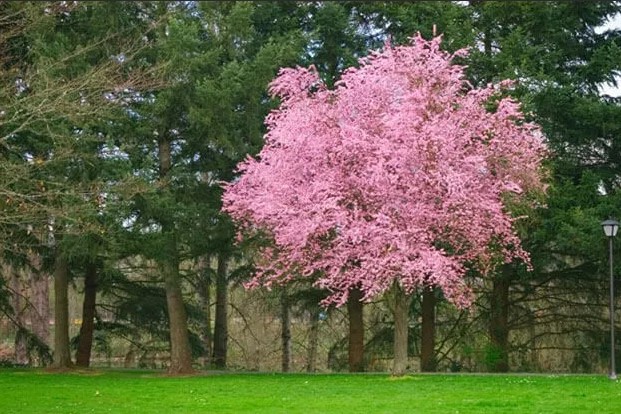
Plum trees are lovely but left to themselves, they can become a burden. They tend to send up tall shoots, producing fruit toward the top that only the birds and squirrels can reach. Or they can produce so much fruit, limbs can break under the weight.
It’s important to prune a plum tree to maintain its health and promote fruit—this is done by providing channels of light throughout the tree so the fruit can mature.
Maintaining Plum Tree Health AND Promoting Good Fruit:
- Develop a strong foundation by training a young plum tree into a vase shape (see #5).
- Keep the lower trunk clear of buds by rubbing them out and pull off or cut suckers growing from the root.
- Remove deadwood, weak branches, and crossing branches by making proper pruning cuts.
- Keep the space around the tree trunk clear of grass so the lawnmower doesn’t hit it and there’s no competition for water and nutrients. The best advice is to mulch 4-6” around the base, out to the dripline. Don’t let the mulch push up against the trunk, though!
- Train and maintain a tree so it is open to the light. For a plum tree, a vase format is best, with a short trunk and 3-4 major branches coming off at a 45-degree angle. This allows plenty of light and air into the tree. When the interior is too crowded, thinning cuts should be made by removing an entire shoot, branch, or limb.
- Eliminate water sprouts, which are strong shoots that grow vertically. They grow from previous pruning cuts.
- Keep the tree at a height where fruit can be harvested.
Some information provided by “Pruning Tree Fruit – The Basics” by Gary Moulton and Jacky King, Washington State University Mount Vernon Research and Extension Unit

